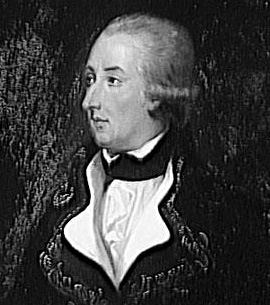Allegiance France Role 1750–1794 | Name Arthur Dillon | |
 | ||
Children Henriette-Lucy, Marquise de La Tour du Pin Gouvernet, Elisabeth-Francoise Dillon | ||
Arthur Dillon (3 September 1750 – 13 April 1794) was an England-born aristocrat who inherited leadership of a French army regiment and remained in the French army, serving the Ancien Régime in the American and French Revolutionary Wars. After serving in political positions during the early years of the revolution, he was executed in Paris as a royalist during the Reign of Terror, in 1794.
Contents
Career

Born at Bray Wick in Berkshire, England, Dillon was the son of Lady Charlotte Lee and Henry Dillon, 11th Viscount Dillon of Costello-Gallen, and cousin of Théobald Dillon (not to be confused with his brother, also named Théobald). His grandfather was general Arthur Dillon. He was the grandfather of Arthur Dillon, also a military officer.
At eighteen, he married a second cousin, Therese-Lucy de Rothe (1751 – 7 September 1782); the couple had two children: George (who died at two years of age) and Henriette-Lucy, or Lucie (by marriage, Henriette-Lucy, Marquise de La Tour du Pin Gouvernet), a memoiriste of the Revolutionary period and the Napoleonic era. On the death of his uncle, Edouard, by inheritance, he became colonel of the Dillon family's proprietary regiment.
In 1778, he sailed with his regiment to the Caribbean to campaign against Britain. He served at Grenada; Savannah, Georgia (where he was promoted to brigadier); and elsewhere. After the Treaty of Paris, he became governor of Tobago. His first wife having died, he married a wealthy French Creole widow from Martinique, Laure de Girardin de Montgérald, the Comtesse de la Touche, by whom he had six children.
He returned to Paris to represent Martinique in the Estates-General of 1789 as a democratic, reformist royalist.
Dillon assumed military duties at a very difficult time for noble officers of the old army. On 29 April 1792 his cousin Théobald Dillon was lynched by his own troops after a minor skirmish. After the Battle of Valmy, when Charles Dumouriez returned to the Belgian frontier with the greater part of the army, he detached Dillon with 16,000 troops to form the rump of the Army of the Ardennes around 1 October 1792. Two weeks later Dillon was called to Paris for questioning and was ultimately arrested on 1 July 1793 despite being stoutly defended by his aide-de-camp François Séverin Marceau-Desgraviers. He was condemned for alleged participation in a prison conspiracy and executed by guillotine on 13 April 1794. In his final moments he mounted the scaffold shouting, "Vive le roi! (Long live the king)".
